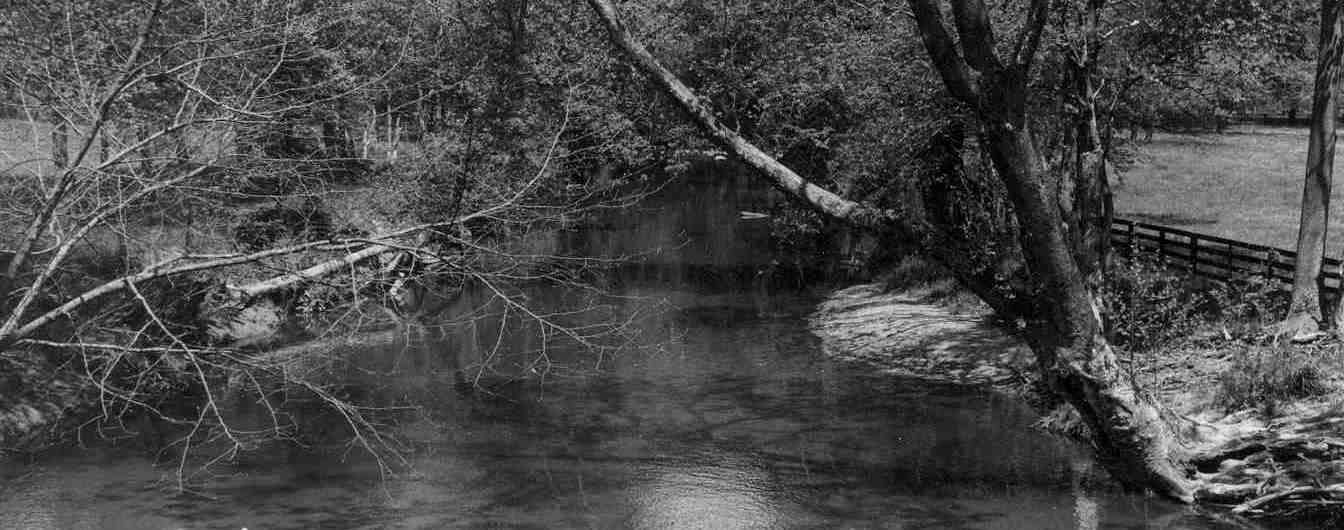

Overseeing the Water Resources of Loudoun County, VA
Origins of the Catoctin Scenic River
In mid-1974, announcements were made almost simultaneously by the Fairfax County Water Authority and the U.S. Army Corps of Engineers that Catoctin Creek was a prime candidate for a dam and reservoir impounding water for a 7-day supply for the Washington, DC area during drought periods. This plan would have flooded more than 3,000 acres of Loudoun County, including the hamlet of Taylorstown, VA and part of Waterford, VA. Residents of this area organized the Catoctin Valley Defense Alliance to fight the project. Their strategies included:1) Achieving “scenic river” designation for Catoctin Creek
2) Having Taylorstown listed on the National Register of Historic Places
3) Getting an amendment to Virginia’s eminent domain statute preventing one jurisdiction from obtaining water supply from a neighboring jurisdiction without permission of the affected jurisdiction
4) A public relations campaign to bring attention to this action.
The first part of the plan was to get the Commonwealth of Virginia to name Catoctin Creek a scenic river; this action would provide protection by the state through the Commission on Outdoor Recreation. The County of Loudoun decided to seek this status for both Goose Creek and Catoctin Creek and to concentrate on Goose Creek first. The Catoctin Valley Defense Alliance, recognizing that, because of the amount of work necessary to obtain this status, it was highly unlikely that Loudoun County would get two creeks named in the same year, approached the Commission and offered to do much of the work necessary to achieve this designation for Catoctin Creek. The Piedmont Environmental Council prepared the technical report and members of the Alliance obtained the necessary signatures of two-thirds of the affected landowners, and from the owners of two-thirds of the riparian land. With this preparatory work done, a bill to declare Catoctin Creek a scenic river was introduced into the Virginia General Assembly by Senator Charles Waddell and was passed. The effect of this action was twofold:
1) No obstruction can be built on this stream without legislative approval
2) It gave notice to the Army Corps of Engineers that the State of Virginia would not passively let them take whatever action they wished.
The second strategy involved gaining historic status for the small village of Taylorstown. This effort involved approximately sixty four acres belonging to five landowners in the central part of the community which would have been the deepest part of the reservoir. They were successful in obtaining listing on the National Register of Historic Places. This designation would not prevent any action, such as building a dam; however, it would require that whatever federal agency proposed the action would be required to prepare an environmental impact statement, thus slowing the action.
The third plan of attack was to seek an amendment to Virginia’s eminent domain statute, a proposal also being sought by a legislator in Tidewater Virginia. House Bill No. 921, introduced into the House of Delegates of the Commonwealth of Virginia on February 11, 1974, contained the following wording, “No municipal corporation, after July one, nineteen hundred seventy-four shall construct, provide or operate without the boundaries of such municipal corporation any water supply system prior to obtaining the consent of the county or municipality in which system is to be located;….” Representing the Alliance, Anna Hedrick and Philip Ehrenkranz (b 1939) testified at the legislative hearings in support of the bill, which was passed by the General Assembly of Virginia in 1975.
Finally the Alliance launched a public relations and political campaign to gain attention by the media and elected officials for this struggle. During the mid-1970s, newspapers including The Washington Post, The Richmond News-Leader, and all those in Loudoun, published editorials condemning the dam proposal. Congressman Frank R. Wolf (b 30 Jan 1936), Senator Charles Waddell, and Delegates Earl E. Bell (b 10 May 1920) and Kenneth B. Rollins (b 16 Jan 1936) all came out against it. The Loudoun County Board of Supervisors unanimously approved resolutions opposing the project, and members of the Fairfax Board opposed it as well.
The successful strategies employed by the alliance served to put the would-be dam into governmental limbo. Ehrenkranz, who had been appointed by the Board of Supervisors as Loudoun’s representative to The Metropolitan Washington Council of Governments (COG) Water Committee, monitored all developments relevant to area water supply. A highly significant development occurred in 1979, when the technical staff of the Interstate Commission on the Potomac River Basin released a study concluding that adequate water supplies could best be assured by interconnecting the area’s existing reservoirs. The Corps did not react to this alternative for over a year. Then, at a meeting attended by Ehrenkranz at COG in 1981, a Corps representative announced that the Catoctin project would be abandoned. Ehrenkranz was advised off-the-record that among the factors motivating the Corps decision were the interconnection proposal and public opposition to the dam and reservoir.
Further details may be found at the Balch Library "Catoctin Dam Project Papers 1974-1975"
http://ead.lib.virginia.edu/vivaxtf/view?docId=tbl/viletbl00066.xml

Catoctin Creek 1974 - Looking north from RT 673
info@loudounwatershedwatch.org Copyright © 2012 Loudoun Watershed Watch